iPad Pro 2020 vs Microsoft Surface Pro 7: Is Apple or Windows the best pick?
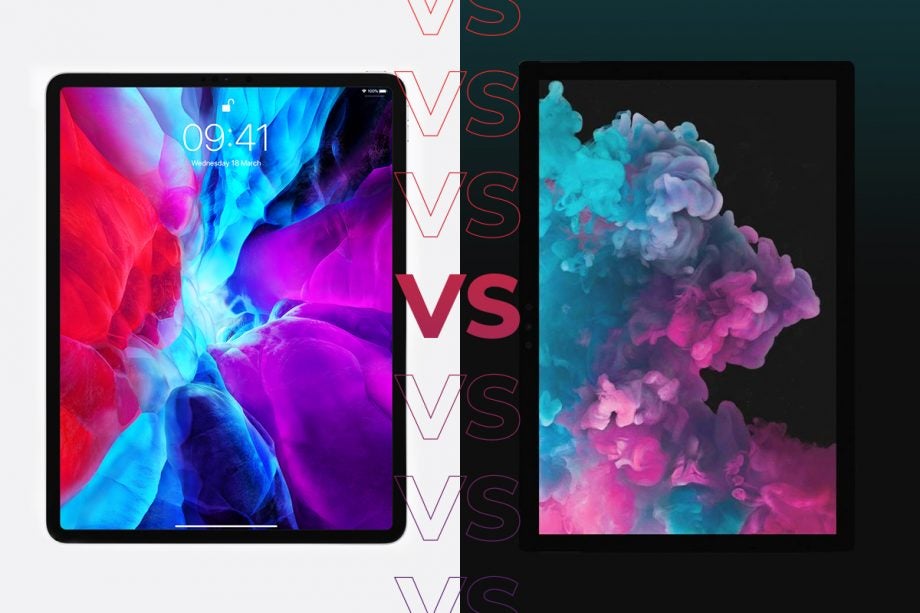
Which is the best option for a versatile workstation between the best of Microsoft and the best of Apple? Here we put the two high-spec devices head to head.
Buying a premium tablet or convertible can be a tough choice. If you’re looking to compare between two of the best options with the iOS and Windows operating systems, then check out our comparison between the iPad Pro 2020 and the Microsoft Surface Pro 7.
Related: Best Tablets
iPad Pro 2020 vs Microsoft Surface Pro 7: Price
The pricing for the iPad Pro 2020 starts at £769 for the 11-inch version with 128GB storage, but increasing the storage to 1TB will cost you £1260. As for the 12.9-inch version, this starts at £969 for 128GB and goes for £1469 if you want 1TB of storage.
Microsoft Surface Pro 7 starting price is £799 for the version with Intel Core i3 and 4GB RAM, 128GB storage, and rises to a maximum of £2249, for the Core i7 version with 16GB RAM and a 1TB SSD.
iPad Pro 2020 vs Microsoft Surface Pro 7: Design
The iPad Pro 2020 is constructed from aluminium and glass, and is available in two subtle colours; Silver, and Space Gray. There are minimal bezels around the display, and it’s not only attractive, but it’s functional too. Unlike some other Apple devices (including the iPhone 11 series), fortunately, this one does feature a USB-C port.
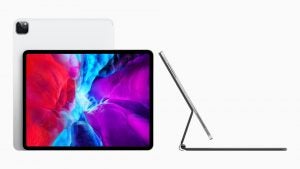
iPad Pro 2020 with Magic Keyboard
If you want to use your iPad Pro more as a workstation than a tablet, the new Magic Keyboard offers this feature with a magnetic connection to the device.
The Microsoft Surface Pro 7 also has a metallic sheen and is available in two colours: platinum or black. It’s a little boxier in its form but has a flourish in the form of the Microsoft logo. As far as accessories go, it has a kickstand and an attachable keyboard.
iPad Pro 2020 vs Microsoft Surface Pro 7: Screen
The Microsoft Surface is available in just one screen size, 12.3-inches. This LCD panel has got a 2736 x 1824 resolution, and a 3:2 aspect ratio.
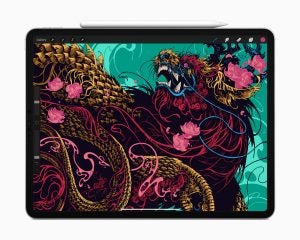
iPad Pro 2020 Display
By contrast, the iPad Pro 2020 has two screen sizes: 11-inches and 12.9-inches. It’s also an LCD (and we admit we’d have preferred an OLED), and both models in the series have a resolution density of 264 pixels per inch.
The iPad Pro’s screen comes into its own thanks to a variable refresh rate which can hit a maximum of 120Hz for super-smooth scrolling.
iPad Pro 2020 vs Microsoft Surface Pro 7: Performance
All variants of the iPad Pro 2020 runs on a new own-brand A12Z Bionic chip. We haven’t yet tested this one as yet, but we can reasonably expect it to be an improvement on the previous generation which ran on the A12X Bionic. That chip performed very well in our review, coping with intensive tasks such as 4K video editing and digital art without giving a hint of lag. It could also run all of the games on the App Store that we tried, though admittedly none of the titles there are truly of console-standard. All versions of the iPad Pro 2020 have 6GB of RAM.
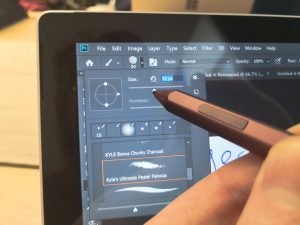
Microsoft Surface Pro 7 in action
The Microsoft Surface Pro 7 is available in many different configurations, from a Core i3 version right up to a Core i7 (all are 10th generation). We tested the top-spec version and found it to be more than powerful enough for sizeable digital paint projects, small-scale video editing, and lightweight 3D modelling. The device recorded impressive 2015.4 MB/s read speeds, and 805 MB/s write speeds via CrystalDiskMark. Seeing as it’s available with up to 16GB of RAM, multitasking shouldn’t present a problem either. However, it was very poor when it came to gaming due to the lack of graphics options; even undemanding games such as Overwatch were too much for it.
iPad Pro 2020 vs Microsoft Surface Pro 7: Camera
The Microsoft Surface Pro offers a “basic” 5-megapixel front-facing camera and an 8-megapixel camera on the rear.
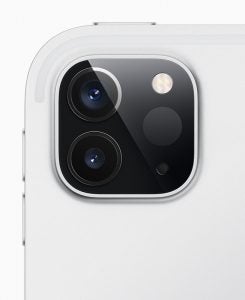
iPad Pro 2020 Camera
On the other hand, the iPad Pro 2020’s camera has seen a major, major revision, not only boasting a 12-megapixel camera but also adding a 10-megapixel ultrawide camera and a LiNAR scanner for depth sensing. This set-up should offer far greater photographic versatility than Microsoft’s


